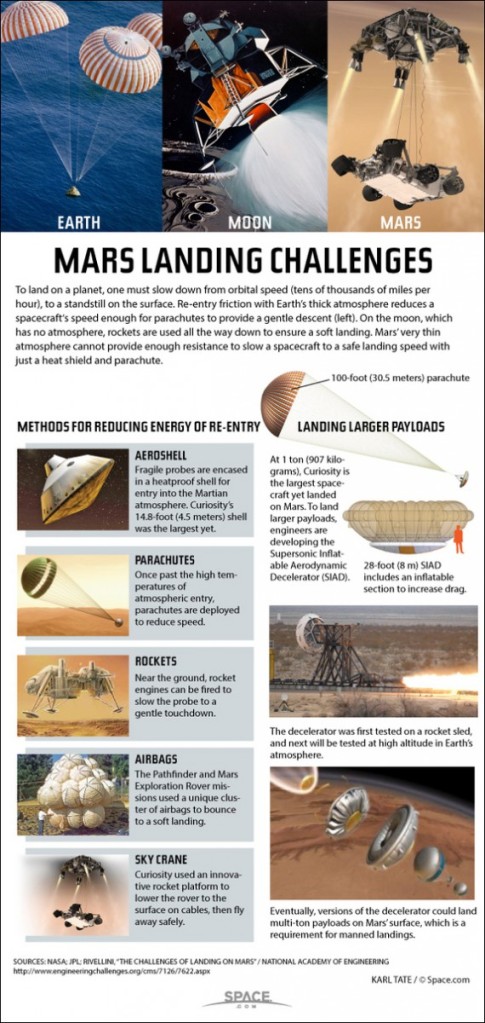The Martian atmosphere is too thin for parachutes to be efficient, but too thick to allow landers to decelerate using only rocket engines. Consequently, a great deal of ingenuity is required to drop massive objects (like robots, and one day, people) onto the Martian surface without breaking them. (via space.com)
Here’s a beautiful graphical review of the approaches we have used in the past — and one prospect for delivering even larger payloads in the future.

